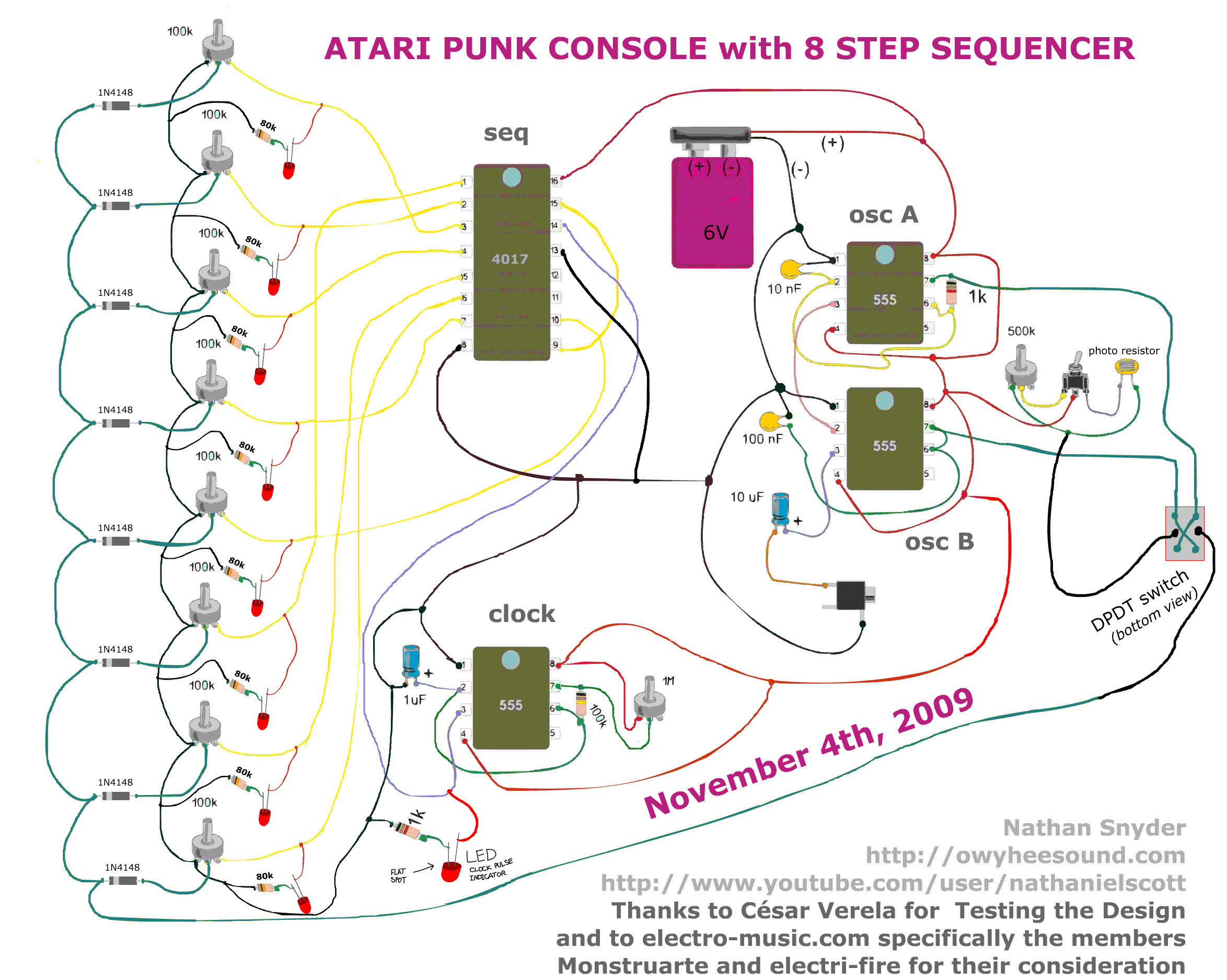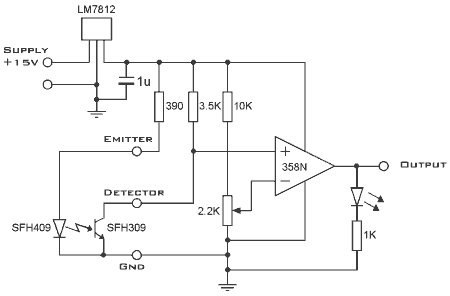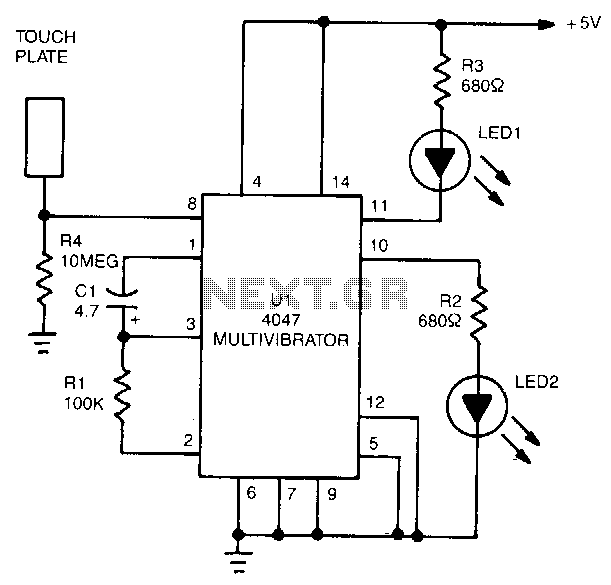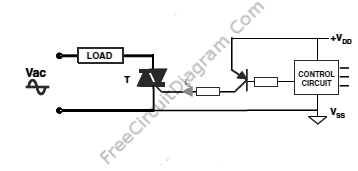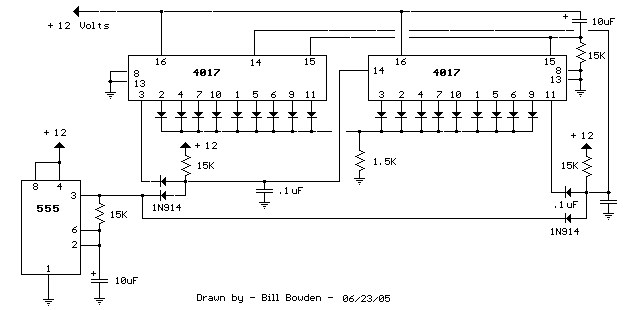
Midi Trigger Sequencer
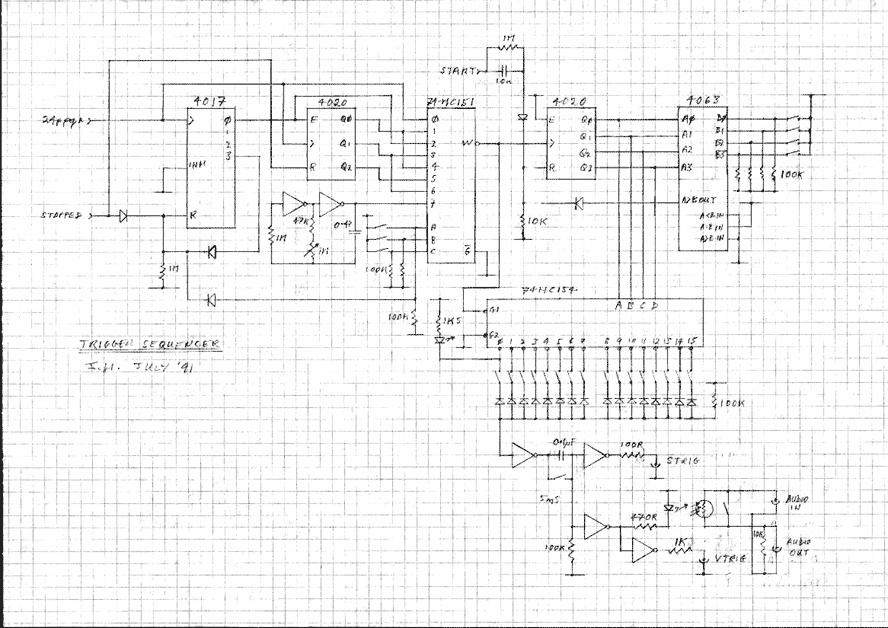
Add this to the above circuit to get a programmable trigger sequencer. Includes an optional audio modulation stage.
The circuit described is intended to function as a programmable trigger sequencer, which allows for the generation of precise timing signals or triggers based on user-defined parameters. A typical implementation of such a sequencer involves the use of a microcontroller or digital logic components to control the timing and sequence of output pulses. The sequencer can be programmed to produce a variety of patterns, including repetitive sequences, varying pulse widths, and adjustable intervals between triggers.
To integrate an optional audio modulation stage, the circuit can include a dedicated audio processing unit that alters the output signal based on audio input or modulation parameters. This stage can utilize components such as operational amplifiers for signal conditioning, analog-to-digital converters for digital signal processing, and digital-to-analog converters to produce audio outputs. The modulation could be applied in real-time, allowing the sequencer to respond dynamically to audio signals, thus enhancing its functionality.
The schematic may include various elements such as a microcontroller with GPIO pins for trigger outputs, a clock source for timing, and potentially a user interface for programming sequences. The audio modulation stage can be designed to accept audio signals via an input jack and process them through filters or modulation effects, which can then influence the timing or characteristics of the trigger outputs.
Overall, this programmable trigger sequencer with an audio modulation stage provides a versatile tool for various applications, including music production, sound design, and experimental electronic projects. The combination of programmable triggers and audio modulation allows for creative possibilities in sequencing and sound manipulation.Add this to the above circuit to get a programmable trigger sequencer. Includes an optional audio modulation stage. 🔗 External reference
The circuit described is intended to function as a programmable trigger sequencer, which allows for the generation of precise timing signals or triggers based on user-defined parameters. A typical implementation of such a sequencer involves the use of a microcontroller or digital logic components to control the timing and sequence of output pulses. The sequencer can be programmed to produce a variety of patterns, including repetitive sequences, varying pulse widths, and adjustable intervals between triggers.
To integrate an optional audio modulation stage, the circuit can include a dedicated audio processing unit that alters the output signal based on audio input or modulation parameters. This stage can utilize components such as operational amplifiers for signal conditioning, analog-to-digital converters for digital signal processing, and digital-to-analog converters to produce audio outputs. The modulation could be applied in real-time, allowing the sequencer to respond dynamically to audio signals, thus enhancing its functionality.
The schematic may include various elements such as a microcontroller with GPIO pins for trigger outputs, a clock source for timing, and potentially a user interface for programming sequences. The audio modulation stage can be designed to accept audio signals via an input jack and process them through filters or modulation effects, which can then influence the timing or characteristics of the trigger outputs.
Overall, this programmable trigger sequencer with an audio modulation stage provides a versatile tool for various applications, including music production, sound design, and experimental electronic projects. The combination of programmable triggers and audio modulation allows for creative possibilities in sequencing and sound manipulation.Add this to the above circuit to get a programmable trigger sequencer. Includes an optional audio modulation stage. 🔗 External reference
